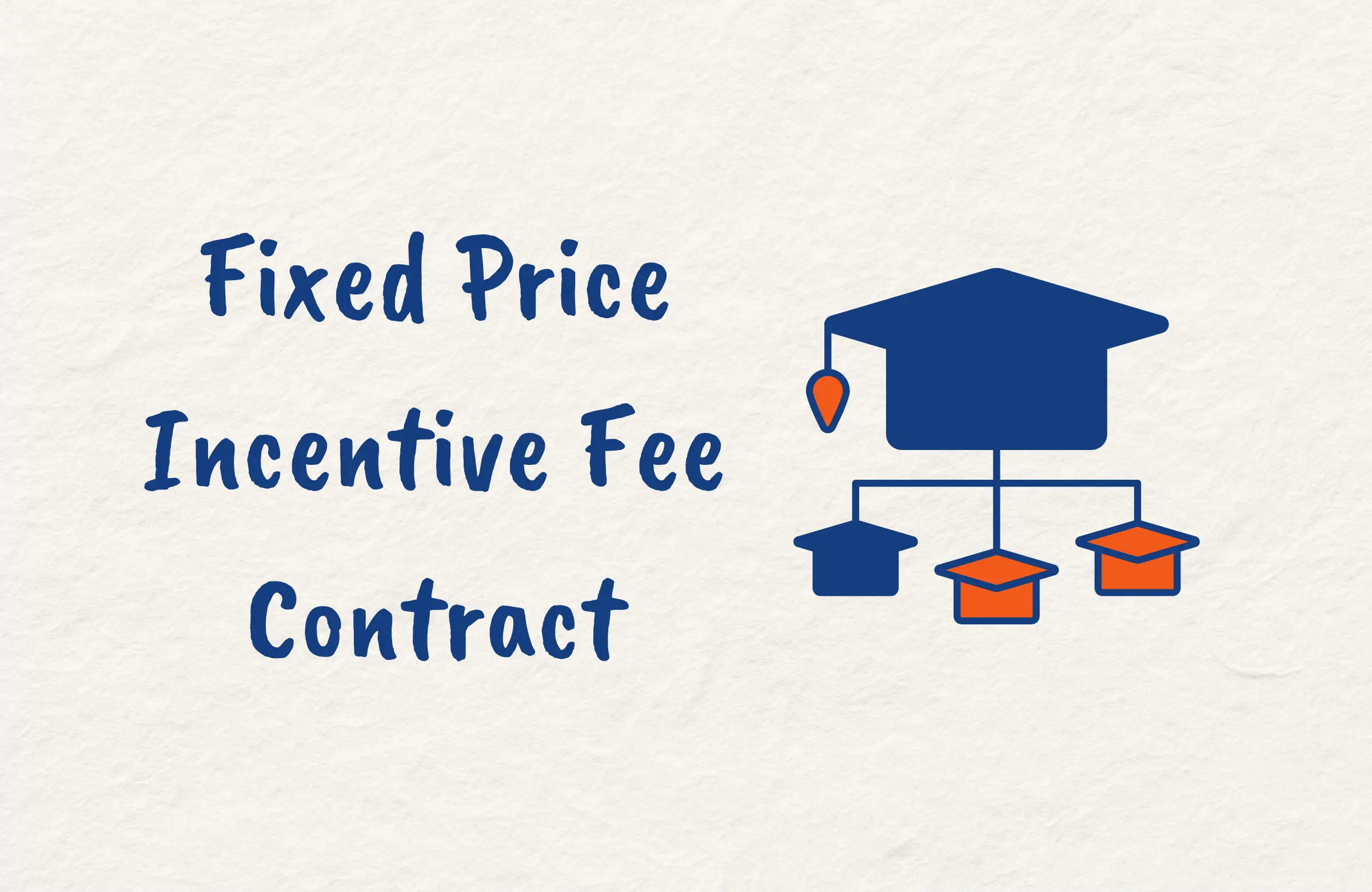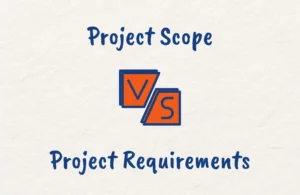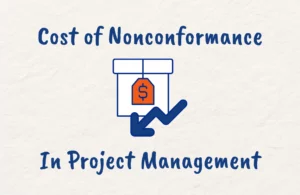When managing a project that involves procurement, there are different types of contracts that you may use. Whatever type you decide to go with, properly structuring it is key to risk management.
One of the contract types that you can use is the fixed price incentive fee contract. This contract is designed to provide flexibility in procurement while incentivizing performance.
In this post, we’ll explain all that you need to know about fixed price incentive fee contracts, including how performance criteria and price ceilings work, and when this contract type makes sense for your project. You’ll also learn its advantages and disadvantages compared to other common contract types.
What is Fixed Price Incentive Fee Contract?
A fixed price incentive fee (FPIF) contract is a type of contract that provides financial incentives to the seller for meeting or exceeding certain performance criteria. It combines aspects of a fixed-price contract with a cost-reimbursable contract.
The buyer and seller agree upfront on a target cost, a target profit, a price ceiling, and a profit adjustment formula. The profit adjustment formula determines how any cost variance at project completion is shared between the buyer and seller.
If the final cost is less than the target cost, the seller earns a greater profit. If the final cost is higher, the seller earns a lower profit. The price ceiling sets the maximum price the buyer will pay. An FPIF contract motivates the seller to control costs. However, the buyer accepts more risk than a firm fixed-price contract.
Fixed Price Incentive Fee Performance Criteria
The incentives in a fixed price incentive fee contract are tied to meeting or exceeding predetermined performance criteria. The buyer and seller agree on these criteria upfront when negotiating the contract.
Common performance criteria include:
- Cost: For example, completing the project under the target cost. Cost underruns are shared between the buyer and seller based on a share ratio.
- Schedule: Such as finishing all deliverables by the target completion date. Schedule outperformance may earn the seller an incentive payment.
- Quality: Meeting quality standards, defect rates, or service levels specified in the contract. Excellent quality workmanship could result in an incentive.
- Technical Performance: Satisfying technical metrics like speed, throughput, uptime, efficiency, or other key performance indicators (KPIs).
The performance criteria directly tie to the project scope and objectives. They should be clearly defined, measurable, and attainable. Effective criteria strike a balance between motivating the seller’s best work and reasonable stretch goals.
Picking the right performance metrics requires understanding what’s most important to project success and what’s within the seller’s control. The criteria form the backbone of the profit adjustment formula that ultimately determines the seller’s final payment and profit.
Fixed Price Incentive Fee Calculation
The profit adjustment formula is a key component of fixed price incentive fee (FPIF) contracts. This formula determines the seller’s final payment and profit based on their performance against the agreed-upon criteria.
The profit adjustment calculation involves the following elements:
- Target Cost: This is the estimated cost established at the contract outset.
- Target Profit: This is the profit amount the seller earns if the target cost is met.
- Target Price: This is the target cost plus the target profit.
- Ceiling Price: This is the maximum price the buyer will pay, including profit and cost overruns.
- Share Ratio: This is the percentage split of any cost variance between the buyer and seller.
- Actual Final Cost: This is the total cost incurred at project completion.
The steps to determine the final profit are:
- Compare the actual final cost to the target cost to find the cost variance.
- Multiply the variance by the share ratio percentage to determine the seller’s share.
- Subtract the seller’s share from the target profit to get the final profit amount.
- Add the final profit to the actual final cost to obtain the total price.
If the final cost hits the price ceiling, then the seller gets no profit. Cost overruns above the ceiling are fully absorbed by the seller.
Cost underruns boost profit by the seller’s share ratio percentage. Profit incentives motivate the seller to complete the project at or under the target cost. Savvy sellers will bid conservatively to ensure their target price accommodates contingencies.
Fixed Price Incentive Fee Contract Advantages and Disadvantages
Fixed price incentive fee (FPIF) contracts offer some benefits but also pose some drawbacks for buyers and sellers. Understanding the pros and cons helps determine when this contract type makes sense.
Advantages of Fixed Price Incentive Fee Contract
Some advantages of a fixed price incentive fee contract include:
1. Incentivizes Seller Performance
The profit incentive motivates the seller to meet or beat the performance targets in order to maximize their profit. This aligns with the buyer’s goal of getting the best possible outcome from the project.
2. Risk Sharing
The share ratio provides risk sharing if the final costs underrun or overrun the target cost. This way, both the buyer and seller share the risk, rather than the buyer bearing all the risk as in a firm fixed price contract.
3. Cost Control
The seller is financially motivated to diligently control costs to come in at or below the target cost and earn a greater profit. This benefits the buyer by reducing the chances of cost overruns.
4. Performance Flexibility
FPIF contracts can include incentives tied to cost, schedule, quality, technical performance, or other goals important to project success. This flexibility allows customization based on the buyer’s priorities.
5. Price Protection
The ceiling price limits the maximum payment the buyer will make, protecting them from excessive overruns as the seller bears the risk of costs above the ceiling.
Disadvantages of Fixed Price Incentive Fee Contract
Here are some disadvantages of a fixed price incentive fee contract include
1. Complex Calculations
The profit adjustment calculations can become complex, especially if there are many variables and share ratios. It is simpler than a cost-plus contract but more complicated than a fixed-price contract.
2. Target Setting
It can be challenging for the buyer and seller to mutually agree on fair and realistic targets for cost, schedule, performance, etc. Miss-set targets undermine the contract’s effectiveness.
3. Higher Buyer Risk
The buyer accepts more risk of cost overruns and delays versus a firm fixed-price contract where the seller bears the risk. The buyer must pay overruns within the ceiling price.
4. Trust
The buyer has to trust that the seller is honest in their proposed targets and not inflating them to make incentives easier to achieve.
5. Scope changes
If the project scope changes substantially, the original targets may become invalid and both parties may need to negotiate adjustments.
When to Use Fixed Price Incentive Fee Contracts in Project Management
Fixed price incentive fee (FPIF) contracts can be suitable when:
- Definable Performance Criteria: The project has clear metrics like cost, schedule, quality, or technical milestones that can form the basis of incentives. These need to be measurable and achievable.
- Require Seller Motivation: The buyer wants to financially motivate the seller’s peak performance and align incentives.
- Limited Buyer Risk Tolerance: The buyer is willing to share some risk of cost overruns, but has a limit to their risk exposure.
- Better Defined Scope: The project scope, specifications, and expected costs are well-defined enough to allow reasonable target setting.
- Trust in the Seller: The buyer has confidence the seller will bid honestly on target costs and not inflate them.
- Risk/reward Balance: The buyer sees value in incentivizing performance even though they take on more risk than a fixed-price contract.
- Past Project Experience: The buyer has experience with FPIF contracts and finds the model aligns with their procurement strategy.
Difference Between Fixed Price Incentive Fee and Cost Plus Incentive Fee
FPIF contracts provide incentives based on performance against preset targets like cost, schedule, quality, etc. The final price paid is adjusted based on meeting the targets.
In contrast, CPIF contracts reimburse the seller’s actual costs incurred, plus a pre-negotiated fee that includes an incentive portion.
Key differences between them include:
Price Basis
FPIF contracts have a pre-determined target price as the cost baseline. The final price paid adjusts up or down from the target price based on performance against the incentives.
In contrast, CPIF contracts are cost-reimbursable where the seller bills their actual costs incurred. There is not a single target price.
Risk
With FPIF, the seller assumes greater financial risk if the actual costs exceed the targets that determine incentive payments and is responsible for cost overruns beyond the ceiling price.
In CPIF contracts, the risk is shared because the buyer reimburses actual costs plus the fee.
Incentive
FPIF incentives are tied to performance metrics like cost, schedule, quality, etc. CPIF incentives are narrowly focused on rewarding the seller for coming in under the target cost.
Profit
CPIF has a pre-negotiated fixed fee that gets adjusted by a share ratio formula. Whereas FPIF profit floats based on the seller’s performance against the agreed targets using the profit adjustment formula.
Overruns
In FPIF contracts, the seller pays for any cost overruns beyond the ceiling price. In contrast, the buyer pays all costs incurred in a CPIF contract.
Flexibility
FPIF provides more flexibility to incentivize objectives important to the buyer such as schedule, quality, technical milestones, etc., while CPIF is less flexible, and focused on cost performance.
Fixed Price Incentive Fee Example
For an understanding of how FPIF contracts work in practice, let’s look at an example.
A construction project manager needs to hire a contractor to complete the plumbing work on a new housing development. They decide to use a fixed price incentive fee (FPIF) contract to incentivize the plumbing contractor to finish on time and under budget.
The contract establishes a target cost of $500,000 for all plumbing installations based on the project scope and bid. A 10% target profit of $50,000 is agreed upon. The share ratio is 70/30 where the project manager will take 70% of any cost variance, and the contractor takes 30% at project completion.
A ceiling price of $650,000 is set to cap the project manager’s maximum payment and risk exposure. There are also schedule and quality incentives: a $20,000 bonus if finished 2 months early, and $10,000 if less than 2% of plumbing inspections identify defects.
The plumbing contractor diligently manages both costs and schedule. By finding some material discounts and optimizing labor, they incur actual costs of just $480,000, which is $20,000 under the target. They also finish 6 weeks ahead of the 12-month schedule target.
The $20,000 underrun is split 70/30, with the project manager saving $14,000 and the contractor earning an extra $6,000 profit. The early completion earned the full $20,000 schedule incentive, and the high inspection success triggered the $10,000 quality bonus.
In total, the contractor earned $36,000 in incentives above the $50,000 target profit from a performance motivated by the FPIF contract terms. On the other hand, the project manager also benefitted via the cost savings and faster project completion.
Fixed Price Incentive Fee Contract PMP Exam Tips
The fixed price incentive fee (FPIF) contract is one of the contract types detailed in the Project Management Book of Knowledge (PMBOK) Guide 6th Edition. It is used in the Plan Procurement Management and Conduct Procurements processes. Study the inputs, tools, and outputs of these processes related to contract types.
Expect situational questions on when an FPIF contract is optimal versus other contract types. Consider project and buyer risk tolerance, scope definition, and trust in sellers.
Be able to explain the elements of target price, ceiling price, share ratios, and the profit adjustment formula. Calculate sample problems to demonstrate how the incentives work.
Remember that the seller assumes more risk than a cost-reimbursable contract, but less than a firm fixed price. Ensure you can contrast FPIF with other contract types on the exam.
Review your PMBOK guide on procurement processes and leverage PMP practice questions to test your knowledge on selecting and negotiating contract types. Understanding contracts will prepare you for success on the procurement management questions.
Final Thoughts on Fixed Price Incentive Fee Contracts
Fixed price incentive fee contracts provide a balanced approach to incentivizing a seller’s performance while controlling buyer risk. By letting the seller share in cost savings, they are motivated to control expenses. The price ceiling also limits the buyer’s risk exposure.
Though more complex than fixed-price contracts, an FPIF can be the right choice for aligning incentives to key project performance criteria. Careful structuring of targets and ratios provides flexibility for the project manager to optimize and reward the seller’s work.
FAQs
Who Has the Potential to Benefit from a Fixed Price Plus Incentive Fee Contract?
The buyer and seller both can potentially benefit from a fixed price plus incentive fee contract. The buyer benefits through cost control and performance incentives for the seller.
The seller benefits by earning higher profit for meeting or exceeding the contract’s performance targets, which are tied to metrics like cost, schedule, quality, etc.
Can Incentive Fees be Negative?
No, incentive fees in a fixed price incentive fee contract cannot be negative. The incentive fee is an additional profit the seller can earn for meeting or exceeding performance targets.
At worst, the seller earns no incentive fee if targets are not met. However, the incentive fee will never subtract from the base negotiated profit or payment in the contract.





